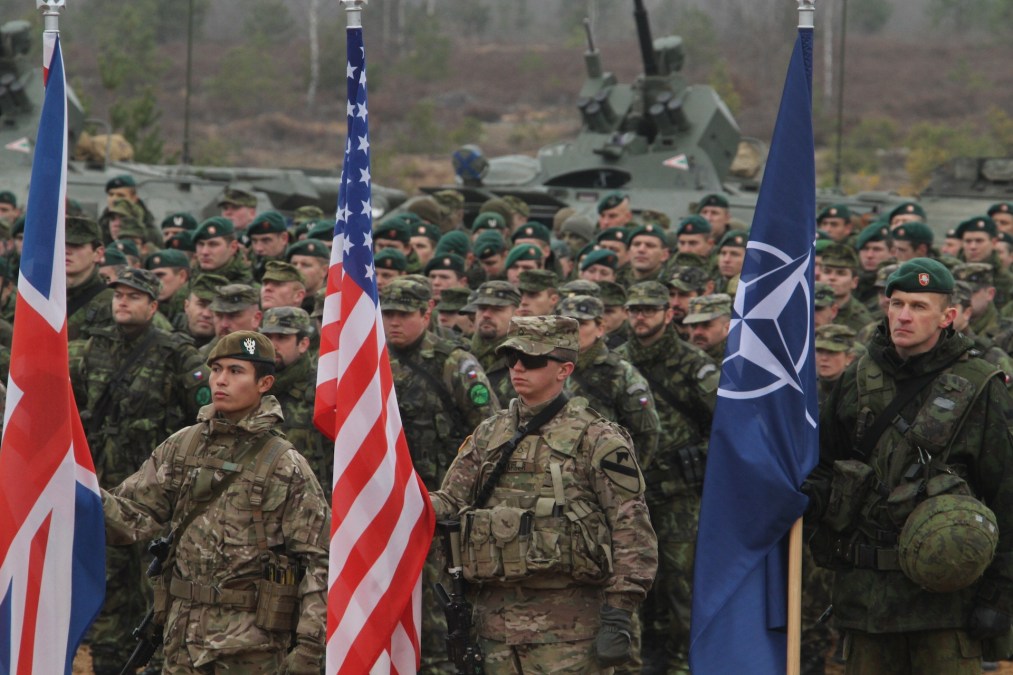Hicks urges NATO to grow industrial capacity, adopt Replicator-like systems

As it works to promote transatlantic security and deter aggression, NATO must strategically grow its collective defense industrial capacity and rapidly adopt interoperable drones and other emerging military capabilities like those the U.S. is presently hustling to field and scale, Deputy Defense Secretary Kathleen Hicks said.
Speaking at the NATO Summit Defense Industry Forum hosted by the U.S. Chamber of Commerce on Tuesday, Hicks reflected on some recent progress and the “pivotal moment” the alliance is now confronting.
“[T]his is not the Cold War, or the post-Cold War era. Even as we face the threat of Russian aggression in Europe, we also cannot ignore the global pacing challenge presented by the People’s Republic of China. So, we have to double down with urgency and confidence,” she said.
The industry forum where Hicks spoke is one element of NATO’s global summit that’s unfolding in Washington this week.
Broadly, NATO leaders host these periodic summits to provide opportunities for heads of state and other leaders of member nations to meet together in one place to discuss top policy priorities and determine near-term plans. This latest gathering will also mark the alliance’s 75th anniversary.
During her presentation, Hicks spotlighted how the U.S. and its NATO counterparts have been making “significant, sustained” investments to boost the alliance’s defense spending, particularly in recent years.
“Even as we seek to deter aggression against all NATO allies, we know that competitors and adversaries always get a vote. So, we have to be ready for whatever may come,” she said.
It’s now essential for allies to be more strategic about increasing their collective defense industrial capacity and production — and ultimately deliver combat-credible capabilities and equipment at faster speed and scale, according to Hicks.
“We need to more rapidly and responsibly adopt new technologies wherever they can add military value — like advanced manufacturing, biotech, and all-domain attritable autonomous systems,” Hicks said.
Notably, while she didn’t specifically mention the Pentagon’s Replicator initiative (which she launched and leads) by name, the goal of that effort is to enable the U.S. military to accelerate programs and field thousands of “attritable autonomous” systems across multiple domains by August 2025. Switchblade 600 drones, uncrewed surface vessels and counter-drone systems were selected for the first tranche.
Hicks also explicitly called on the alliance to continue improving on the interoperability and interchangeability of allied capabilities and weapons.
“That matters for software, too, not just hardware. The more we integrate commercial-off-the-shelf, the faster we can iterate,” she said.
NATO Secretary General Jens Stoltenberg said all alliance members will agree to sign a new defense industrial pledge at this week’s summit.
“That will be a pledge that will help to make our industry across Europe and North America stronger, more innovative and capable of producing at scale. The first element of that pledge is increased defense spending. The other main element in that pledge will be that we have to spend better by spending more together, and that’s partly to ensure that we are able to actually sign the big contracts for the long term, and also partly to ensure that we are able to utilize the economy of scale working together with the defense industry,” he said at the industry forum where Hicks spoke.



